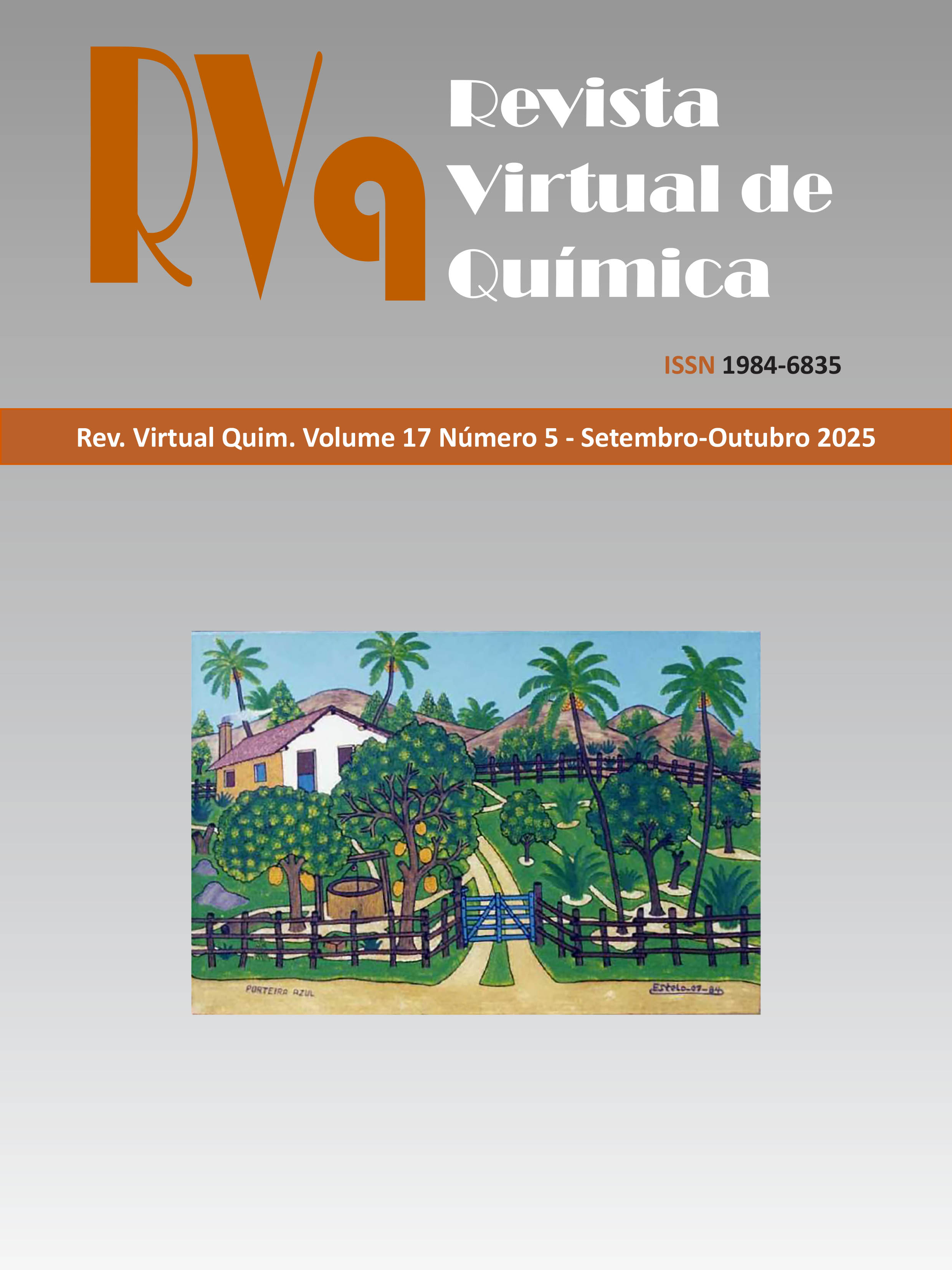Avaliação do Perfil Cromatográfico, Atividade Antimicrobiana e Antioxidante das Partes Aéreas de Marsypianthes chamaedrys (Lamiaceae)
DOI:
https://doi.org/10.21577/1984-6835.20250043Resumo
Marsypianthes chamaedrys (Vahl.) is an herb popularly used for vaginal discharge, uterine inflammation,
and mycosis. This study aimed to obtain the crude ethanol extract and fractions of the aerial parts of
M. chamaedrys, collected in Hidrolândia, Goiás; to carry out thin layer chromatography (TLC); and to
evaluate the antioxidant and antimicrobial activities. Antioxidant activity was measured using the DPPH
(2, 2-difenil-1-picrilhidrazil) method. Antimicrobial activity was measured using the broth microdilution
method. TLC analysis indicated the presence of flavonoids, terpenes, and anthraquinones in the ethyl acetate
fraction; terpenes and flavonoids in the dichloromethane fraction; and saponins in the aqueous fraction.
Very strong to moderate antioxidant activity was found in the ethyl acetate, dichloromethane, and aqueous
fractions (EC50 from 7.57 μg mL-1 to 47.51 μg mL-1). The crude extract and dichloromethane fraction
showed activity against Bacillus cereus, Escherichia coli, and Staphylococcus typhimurium. The hexane,
dichloromethane, and ethyl acetate fractions showed antifungal activity against Cryptococcus gattii,
Candida parapsilosis, Cryptococcus neoformans, Candida albicans, Candida glabatra, and Candida krusei
(MIC = 16 to 256 μg mL-1). The antimicrobial activity justifies the popular use of this species and
encourages new studies to explore its pharmaceutical potential. This work represents the first description
of the antimicrobial activity of M. chamaedrys.
Downloads
Publicado
Edição
Seção
Licença
Copyright (c) 2025 Revista Virtual de Química

Este trabalho está licenciado sob uma licença Creative Commons Attribution 4.0 International License.
Autores que publicam nesta revista concordam com os seguintes termos:
Os direitos autorais para artigos publicados nesta revista são do autor, com direitos de primeira publicação para a revista. Em virtude do acesso público, os artigos são de uso gratuito em aplicações educacionais e não-comerciais desde que com reconhecimento da autoria e da publicação nesta revista.

